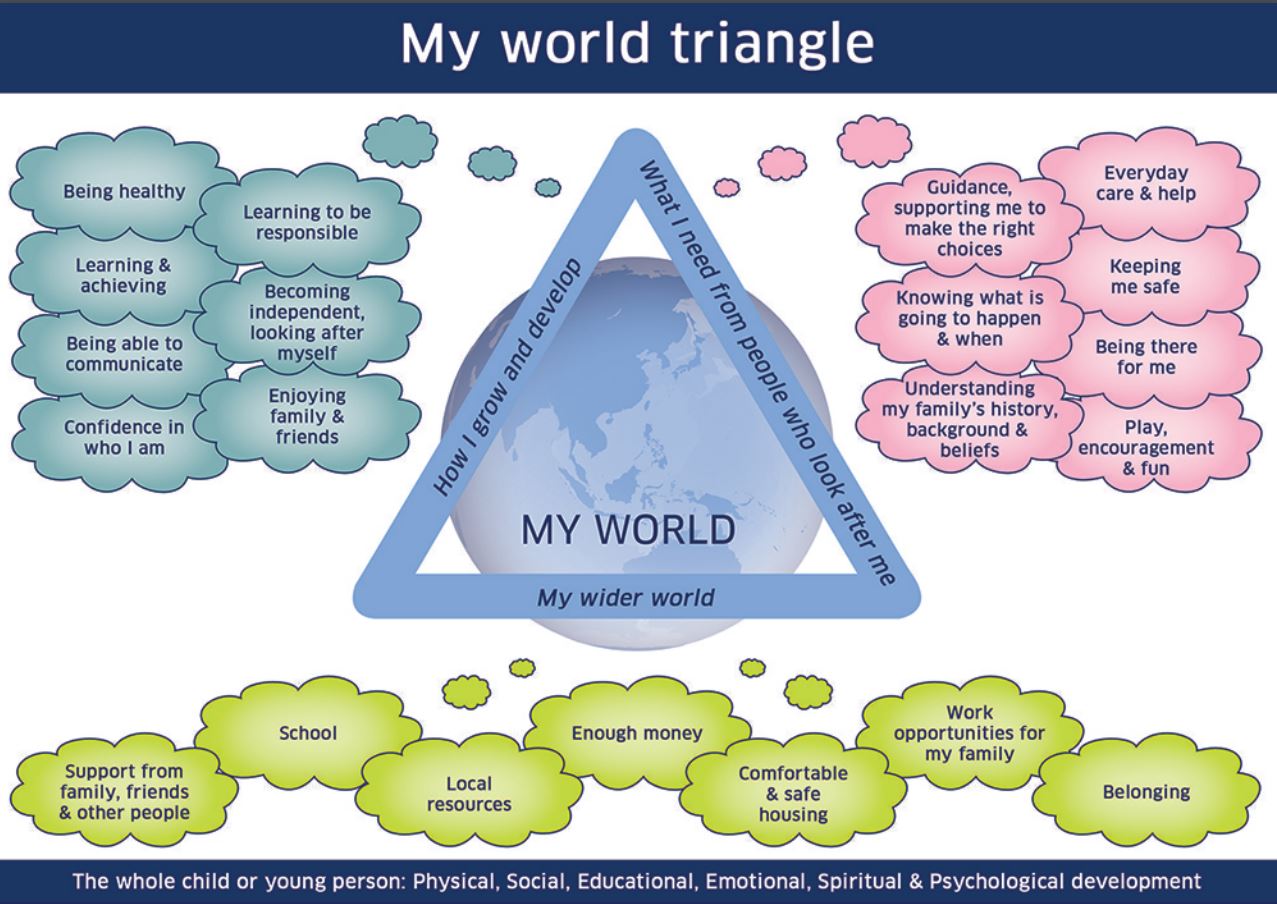Informal Carers
Tools and activities
EXERCISE 1:
My World Triangle
Instructions
Use the heading indicated on the map, it may not be necessary to cover them all.
- How I grow and develop – it outlines factors in the MH person relating to various aspects of physical, cognitive, social and psychological development.
- What I need from the people who look after me – it accounts for the critical influences of other people in the MH person’s life.
- My wider world – the communities where the MH person lives can have a significant impact on the well-being of MH persons and their families and informal carers.
Use the images as a map to identify what barriers or concerns they may have in various areas indicated on the map.
Aim of the activity
This exercise help families and informal carers of MH persons to identify the support systems they have around them. Very often they feel isolated and cannot see the resources they have close to them. This may include other family members, friends, local organisations, peers or any support system which they can utilise in order to facilitate the return to education or employment of the MH person. Using the world triangle is a useful tool to get families and informal carers of MH persons to visualise who they have in their lives or indeed where they require the most support.
The “My World Triangle” also helps to generate conversation between the families and informal carers of MH persons and the Career counsellors for MH person and can be used in conjunction with other activities.
Theoretical framework
- How they cope with caring for the MH person.
- What they need from the people/organisations who already support them in caring for the MH person.
- What potential support systems are available to them – who they have in terms of friends, community, informal or structural support.

EXERCISE 2:
Gratitude Letter
Instructions
Taking time to reflect on what’s gone well in our lives gives us the gift of gratitude.
The world will always show us both good and bad, but if we take time to be thankful for what we do have, we begin to free ourselves from negative influences and find our true purpose.
This activity was first developed by Dr. Martin Seligman, sometimes called the founding father of positive psychology. It’s a letter-writing exercise that he found very successful in helping people feel better about their lives.
Your task is to write a letter of gratitude to your loved one. It should explain what they did for you and how it changed your life.
EXERCISE 3:
Appreciating your own worth
Instructions
Each of us is like a precious seed – we have all the seeds we need to flourish. These traits can be manifested in different ways. For example, some demonstrate their creative abilities in the arts, others through ways of problem-solving or surviving, and still others through showing compassion or helping people. And there are those whose creative abilities seem relatively – though never completely – dormant. Nevertheless, each of us has some creativity in a seed form. It is similar with other desirable attributes – in everyone they are developed to some degree. Even the criminal is honest sometimes. Even a gang leader can be creative in terms of communication or organizational skills (although with self-esteem, he will use these skills for constructive rather than destructive purposes).
EXERCISE 4:
Recognition and acceptance of positive qualities
Instructions
Self-esteem can be nurtured by firmly recognizing what is good in us. This is problematic for many because negative thinking habits make it much easier to recognize what is wrong or inappropriate. And while it may be beneficial to see your own flaws or weaknesses, focusing primarily on them, while ignoring your strengths, is detrimental to your self-esteem.
This exercise helps you recognize and strengthen your own strengths. Self-appreciation is a form of showing yourself love. The technique was developed on the basis of studies by three Canadian scientists who managed to strengthen the self-esteem of the participants of the experiment in just a few weeks (Gauthier, Pellerin, and Renaud, 1983).
As part of your warm-up, highlight features that to some degree or may have applied to you.
